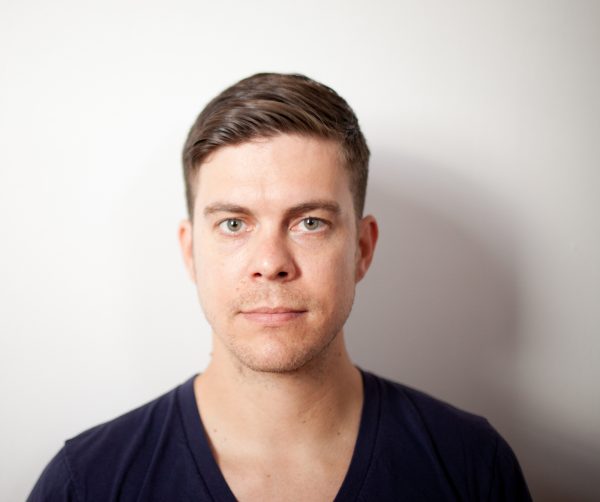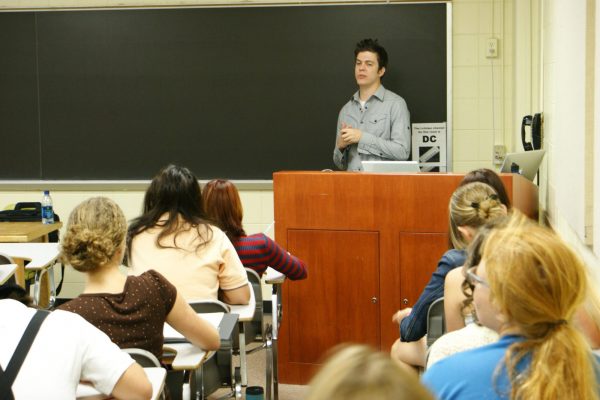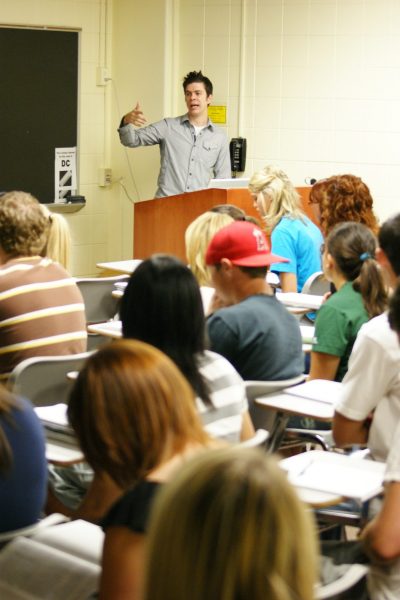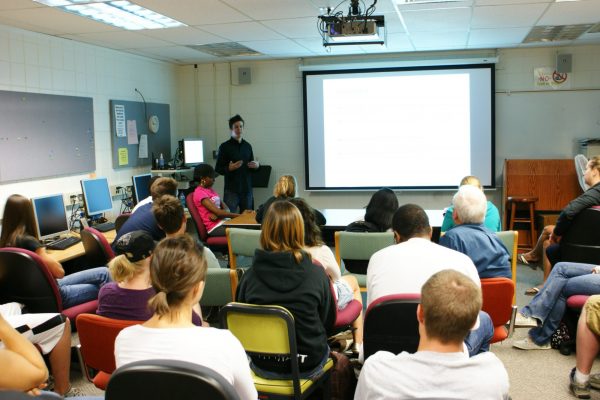A Pulitzer Prize-winning CSU alumnus who is now an editor at The New York Times started his career as a journalism student covering arts and entertainment for The Rocky Mountain Collegian.
Gabriel Dance, who graduated from CSU in 2004 with a dual degree in technical journalism and computer science, was on a team at The Guardian that won a Pulitzer Prize in 2014 for its coverage of whistleblower Edward Snowden’s leaks about the National Security Agency’s surveillance activities. Then he was on the leadership team at The Marshall Project when one of its stories won a Pulitzer in 2016.

After working at The New York Times from 2006 to 2011, he rejoined the newspaper last year as deputy investigations editor, continuing a career that has consistently demonstrated the importance and power of free speech.
He says the blend of writing and computer skills he learned at CSU was key to breaking into the journalism industry at a time when online multimedia was exploding — and when not many people had the combination of skill sets to do it well.
Dance still recalls his first assignment at the Collegian: interviewing Phife Dawg of A Tribe Called Quest. He had been hired by the student paper to do layout, ad placement and pagination. But when he heard that the hip-hop group was performing in Fort Collins, he asked a friend who was the Collegian’s A&E editor if he could do an advance phone interview with Phife Dawg. Dance ended up meeting the performer at the show, and went on to write more concert previews, reviews and entertainment editorials for the Collegian.
He credits one of his former journalism instructors, Jack Lovelace, with introducing him to news writing.
“I had really interesting, international journalism professors,” Dance recalls. “I enjoyed CSU for the academic opportunities it afforded me, but also Fort Collins. I made good friends there.”
After CSU, he went on to graduate school at the University of North Carolina at Chapel Hill, where he studied multimedia journalism.
“It was like a little wrinkle in time, because the Internet was just starting to get better with things like Flash, and broadband was becoming more widely available in the U.S.,” Dance says. “I wanted to build things that people could see and engage with, and I was fortunate because I already had this computer science degree in addition to journalism. I was at this intersection of time, technology and opportunity.”
At UNC, after learning how to build documentary journalism packages that included elements like photo slideshows with audio, interactive graphics and 3-D models, one of his professors connected him to the one-person multimedia department at The New York Times. He ended up getting a multimedia producer job there after graduating from UNC in 2006.
"I wanted to build things that people could see and engage with, and I was fortunate because I already had this computer science degree in addition to journalism. I was at this intersection of time, technology and opportunity.”
– Gabriel Dance
“I was bright-eyed and bushy-tailed and in over my head a bit, but I had skills that no one there had,” Dance says. “Most of them had been there a long time and had just done high-quality, traditional journalism. But I had a multimedia repertoire that not many journalists had.”
He explains that it was really a case of being at the right place at the right time.
“A lot of it was timing, and I just got lucky,” Dance says. “They knew they needed a way to take advantage of this whole Internet thing, because profits weren’t as high as they used to be. So people like me were in high demand.”
But he ended up leaving the Times because he wanted to lead a team, and he’d been promoted about as far as he could get in the multimedia department. He made sure the Times editors knew he wanted to come back someday.
“Usually once you get to The New York Times, you don’t leave The New York Times,” Dance says with a laugh. “It is the best news organization in the world. But I wanted to develop my leadership ability and other skills.”
After being hired as interactive editor for The Guardian U.S., he worked on the paper’s “NSA Files: Decoded” package and won a share of the Pulitzer Prize for Public Service. Then, when former New York Times Executive Editor Bill Keller left the Times to start The Marshall Project, Keller hired Dance to be his managing editor. Dance soon had a hand in a second Pulitzer, which went to Ken Armstrong of The Marshall Project and T. Christian Miller of ProPublica in 2016 for “An Unbelievable Story of Rape.”
He got the rare opportunity to return to The New York Times last September.

“When I left The New York Times, I couldn’t have dreamed that I’d come back as the deputy investigations editor,” Dance says. “But through hard work and good fortune, this opportunity came about. My job now involves telling important stories that reveal a broader or underlying truth.”
One of his first investigations was about social media’s black market, in which people and companies can buy and sell followers. Dance said Twitter has eliminated millions of fake followers as a result of the story. In another of his recent articles, he interviewed a Colorado resident who said she had her Twitter information stolen and turned into an automated “bot.” He plans to continue investigating social media platforms, technology and artificial intelligence.
“Technology is still part of my job,” he said. “Journalism and technology are intertwined now.”
And that’s a trend he started learning about while attending CSU.
“I’m very grateful for my time at Colorado State,” Dance says. “CSU has played a big part in my career.”




